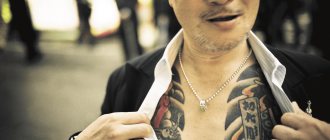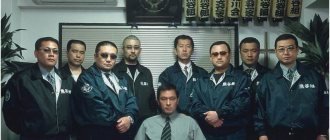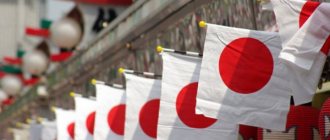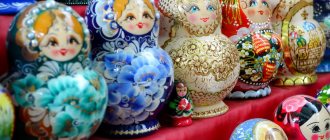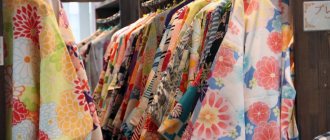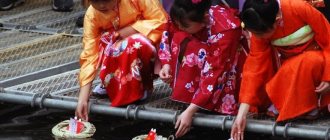Yakuza
The Yakuza is an extremely ancient crime syndicate with origins in Japan and a presence throughout the world. This notorious gang is famous for its strict code of conduct and feudal structure, reminiscent of the ancient samurai.
Legendary samurai warriors. "Bushi" (武士)
Today they have over 110,000 members worldwide, according to Japanese police estimates , making them the largest criminal organization worldwide . The yakuza is completely different from comparable syndicates around the world and may seem completely mysterious to those who grew up watching The Godfather and The Brigade . So we pull back the curtain to reveal 30 facts about this complex and fascinating criminal community.
A Beginner's Guide to the Yakuza
Facts about the Yakuza
Sinister Encounters
The yakuza runs bars called Host/Hostess clubs, where patrons can meet a hostess or host for drinks and conversation.
The host or hostess is the one who is responsible for greeting customers upon entering the restaurant with a smile. Receive them into the establishment, seat them and provide them with a menu. They are the organizer, the shepherd, the first and last impression of the restaurant. Keeping the restaurant tidy, making sure customers are happy, and keeping track of what's happening at each table are just some of the ways a host or hostess helps make the restaurant and its guests happy.
Seems innocent enough. In fact, Japanese girls and young women sometimes visit these clubs to feel like adults (to have an "adult experience" ). The owner convinces them to buy increasingly more expensive drinks (for which he receives a commission). At the end of the night, if the woman cannot pay the bill, she is forced to pay off her debts through prostitution. To make matters worse, the Yakuza have a system that ensures that these women, sometimes in their teens, will never be able to pay off their debts and will be forced to become sex slaves.
Bloody Yakuza Civil War
One of the worst Yakuza wars in history occurred in 1985. The problems began much earlier when the oyabun (patriarch/father) of the Yamaguchi-gumi, Kazuo Taoka, died of a heart attack. His deputy, Kenichi Yamamoto, was in prison, and it was decided that he would become leader when he was released. To the delight of the police, he died in prison. The lieutenants elected a new leader, but a man named Hiroshi Yamamoto was unhappy with the result. He formed his own gang, the Ichiwa-kai , and shot and killed their elected leader, starting a war. By the end of the conflict (from 1985 to 1989), 36 people were killed and hundreds were injured. The whole country followed the great battle of the largest Yakuza group and its rebel warlords: newspapers published daily reports in which they counted losses on both sides. Eventually the surviving rebels begged for mercy.
Yakuza. Farewell to Kazuo Taoka took place under police protection. 1985
Political participation
The yakuza are particularly large supporters and donors to Japan's right-wing Liberal Democratic Party (party president Shinzo Abe ). The LDP has been in power almost continuously since its founding in 1955, with the exception of the period between 1993-1994 and 2009-2012. She regained control of the government in the 2012 elections. It has 285 seats in the lower house and 113 seats in the upper house, and in coalition with Komeito the ruling coalition has supermajority in both houses. They also help strengthen support for the party by using their influence in rural areas where workers depend on their yakuza-owned companies.
Heirs of the Samurai
The yakuza have much in common with another famous Japanese class, the samurai. Their hierarchical structures are based on obedience and honor, they use violence to achieve their goals and believe that pride and honor are of paramount importance. Because of this, many people consider the Yakuza to be the modern-day heirs to the samurai legacy.
26. Bad hand
The Yakuza got their name from the Bakuto people. Bakuto (博徒) were traveling players active in Japan from the 18th to the mid-20th century. In the Japanese card game Oicho-Kabu (a game similar to Baccarat), the cards ya-ku-sa are 8-9-3, the worst possible hand that can be drawn.
Different views
Japanese police and media refer to the yakuza as "boryokudan", which means "violent group", a name considered offensive by members of the community because it also includes common gangsters. As for themselves, the Yakuza, they proudly call themselves "Ninkyō dantai", which means "organization of knights" . I guess no one would want to name their own gang after the Dead Hand in a card game.
Part of society
Yakuza members are often considered a normal and accepted part of Japanese society; in fact, membership is not illegal. Many receive pensions and pay taxes. Police believe that completely banning the yakuza will only force them underground and become even more dangerous.
US Operations
Over the years, the Yakuza expanded its activities throughout the United States, with the largest concentration of members in Hawaii. Members of the Sumiyoshi-kai syndicate collaborate with Hawaiian colored gangs in drug smuggling, racketeering, gambling, the sex industry, organizing the smuggling of American weapons into Japan, as well as financial fraud. The United States has added four Japanese mafia bosses to its sanctions list. They are part of the country's largest organized crime group, Yamaguchi-gumi.
Criminal background
The yakuza are believed to have originated in the mid-Edo period (1603-1868) from two distinct outcast groups, Tekiya (peddlers) and Bakuto (gamblers). Both groups were at the lowest and most despised social level, and gradually began to engage in more organized illegal activities.
From head to toes
One of the most common ways in which the Yakuza stand out in society is through their tattoos all over their bodies. This custom originates from the Bakuto , who covered their bodies with colorful tattoos. Tattoos are called irezumi and they usually cover the entire body except for a stripe down the middle of the chest. Having a tattoo is a symbol of wealth and they also prove a man's stamina because the traditional process is extremely painful and takes many hours and years.
Criminals in Japan were punished with facial tattoos.
20. Circumcision
The usual punishment for a crime in the Yakuza is the cutting off of part of the little finger, which is wrapped in a handkerchief and presented to the boss as an apology. In ancient times, one who was missing part of a finger could not use his sword skillfully, so he became dependent on his patron.
19. Pyramid
The Yakuza hierarchy is organized in the form of a pyramid. The patriarch, called kumicho, is at the top of the family, and his lieutenants, subordinates and other minor gang members move down the pyramid.
Relationship between son and father
All yakuza clans are related to each other by the oyabun-kobun relationship, roles that have been compared to teacher and student, as well as father and son. Kobun swears an oath to the oyabun of complete obedience and fidelity, in exchange for guidance and protection. Any clan member can be either a kobun or an oyabun, acting as a boss to those below him and subordinate to those above him.
17. Helping hand
Despite all their criminal activities, the Yakuza are also quick to lend a helping hand in times of need. After the 2011 tsunami, the organization was among the first to go to the affected areas. In 1995, after a terrible earthquake, the Yakuza delivered supplies using helicopters, scooters and boats. It has been suggested that their outcast background makes them sympathetic to people in trouble, but some people think this is simply a PR stunt designed to make it harder for the police to deal with them.
Yakuza killers?
Despite myths that portray the yakuza as ruthless killers, they are actually reluctant to kill unless in self-defense. Instead, they prefer to use lesser methods such as yubitsume (cutting off a finger) for punishment.
Sex and trade
Human trafficking is a big problem in Japan , and much of it is controlled by the yakuza, although it actually started out as an sanctioned operation. During World War II, they collaborated with the Japanese government to kidnap and supply women to Japanese soldiers and then to the American occupiers. Now the business has expanded to include pornography, human trafficking (often children) and sex tourism.
With honor
The Yakuza do not consider violent death to be something terrible. Violent death is considered poetic, tragic and honorable. They also have something of a Robin Hood complex and are known to help the poor steal from the rich. These romantic ideas help present them in a positive light to the public.
Division by three
The Yakuza organization is divided into three main syndicates. The largest syndicate is the Yamaguchi-gumi , which has over 55,000 members divided into 850 clans. The Yamaguchi Syndicate has extensive international operations. The Yamaguchi-gumi is one of the richest communities in the world of organized crime, generating billions of dollars in profits per year. They are also involved in stock market manipulation and creating pornographic websites.
Positive image
In 2012, to boost morale, the Yamaguchi-gumi syndicate distributed a newsletter to its regular members. The magazine's home page contains instructions for younger members on how to behave and uphold traditional Yakuza values. Haiku, fishing articles and calls for charity filled the rest of the magazine, in what was seen as an attempt to provide some publicity for the group. In 2014, Yamaguchi-gumi opened her own website, which is wildly popular.
Do it for me
The sakazuki ritual is the exchange of cups of sake between an oyabun (father) and a kobun (son). This is the most important ritual in the yakuza world and represents the strengthening of the bonds between them and the organization.
10. A man's world
There are very few women in high positions in the Yakuza organization. The few women who are recognized in the organization are usually the wives of the bosses and are referred to as an-san or big sister.
9. Cramming
If you're pursuing a life of crime in Japan because you're tired of school, I've got some bad news for you. All Yamaguchi-gumi members must pass a 12-page entrance exam. The test was created to ensure that its members are familiar with the law and will not get into trouble with the police.
8. Open
The Yakuza make no attempt to hide their headquarters and even have metal signs outside . They do this to focus on their legitimate business and allow their bosses to manage covert affairs from the "shadows" while keeping their hands clean from direct involvement in illegal activities.
Yamaguchi-gumi headquarters in Kobe
7. Stigma
Yakuza wives often receive the same tattoos as their husbands to show their devotion to their spouses and the criminal organization. They show off their tattoos at festivals and pose for pictures and the press. However, Japanese society still associates the yakuza with crime, and therefore they cannot appear in public places covered in tattoos.
Corporate blackmail
The yakuza practice a form of grand bribery or blackmail called sokaiya. They start by purchasing enough shares in the company to gain a seat at the shareholders' table. They find out all the possible dirt about the management and politely threaten to reveal this information at the meeting if they do not give them money or a controlling stake (raid takeover in Japanese). Since the Japanese fear nothing more than being embarrassed, this tactic is generally effective.
5. Fight back
Sokaiya became so common that in 1982 the country passed laws prohibiting corporations from paying for them. This had little effect on the Yakuza and simply forced them to find more subtle ways to racketeer. The most successful way corporations have found to fight back is to schedule their shareholder meetings on the same day. Since the yakuza cannot be everywhere at once, it effectively reduces the number of cases.
Adding a finger
If you look closely, you'll notice that the children's cartoon character Bob the Builder only has four fingers, but that's unless you're in Japan. The Japanese version of Bob is drawn with five fingers. Why? They didn't want little Japanese kids to think Bob was a member of the Yakuza.
Black market
In Japan, tattoos are highly frowned upon due to their association with the yakuza. Because of this, getting a tattoo in Japan is very expensive, as there are very few artists in the country. Sometimes a yakuza family will pay for someone's tattoo on the condition that they "take back what is theirs" after the person dies. This "art" is so valuable that it is sometimes removed from the owner's corpse, sold on the black market, and even displayed in galleries.
Tattoo shop in Yokohama producing amazing anime art
Samurai sword
The katana, the traditional samurai sword, is still used as a traditional killing weapon. The swords have been used in several high-profile crimes, such as the murder of Fujifilm vice president Juntaro Suzuki, who was killed in 1994 for refusing to pay the Yakuza.
Japanese Godfather
Kazuo Taoka, known as the "Godfather of Godfathers", was the third leader of the largest Yakuza organization from 1946-1981. He grew up an orphan and eventually took up street fighting in Kobe under the tutelage of his future boss, Noboru Yamaguchi. His signature strike, with his fingers into his opponent's eyes, earned him the nickname "The Bear". In 1978, he was shot (in the back of the neck) by rival gang members at a nightclub in Kyoto, but survived. A few weeks later, his abuser was found dead in a forest near Kobe.
Third kumicho Taoka Kazuo.
Views: 11,973
Share link:
- Tweet
- Share posts on Tumblr
- Telegram
- More
- by email
- Seal
Liked this:
Like
Official ban
For many years, the Japanese mafia existed without prohibition. It was only in 1992 that the country's government adopted an act to prevent their activities. The definition of a criminal group, which was previously absent in legislative acts, was defined, and a ban on the racketeering that the Yakuza trade in was introduced. There was a wave of discontent among the gang members themselves and their families. The daughters and wives of the yakuzda took to the streets of Tokyo to demonstrate their protest. Today this has resulted in the fact that they try to keep tattooed people in suits from entering public places. Many bathhouses, beaches, and restaurants are closed to them.
In the 1990s, the Yakuza mafia suffered a much stronger blow. The Japanese crisis began, which continues to this day. As a result of this, the business of the gangs began to gradually collapse, and the number of gang members began to decrease. But their system is not doomed to failure. As long as there are illegal businesses, there will be yakuzas. They try to pass themselves off as businessmen, while using their own criminal jargon, buying shares of world companies and even participating in the country’s politics. They are found on all Japanese islands and even outside their own country.
But people are gradually starting to fight back. Just recently, the manager of a restaurant in Japan filed a lawsuit against Kenichi Shinoda himself, the head of the largest Yakuza clan, Yamaguchi Gumi. She stated that it was the leader who should be held responsible for all the bandits of his clan, who extorted money from her and even threatened to destroy her entire business. This woman’s action can be looked at from different angles. On the one hand, this is a little reckless, because, most likely, after such a statement, the Yakuza mafia will declare real war on her. On the other hand, she showed courage by suing one of the most dangerous people in the world.
